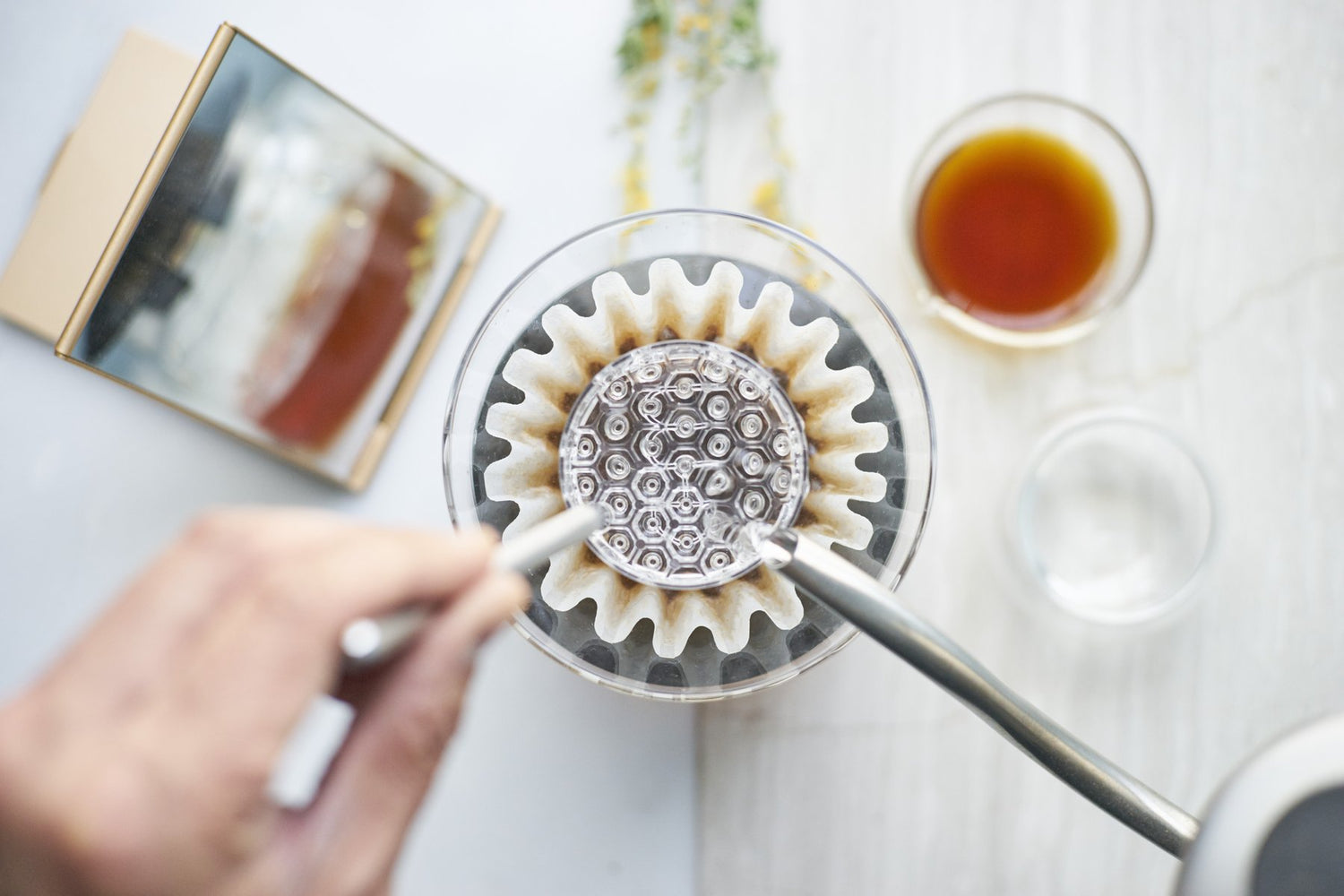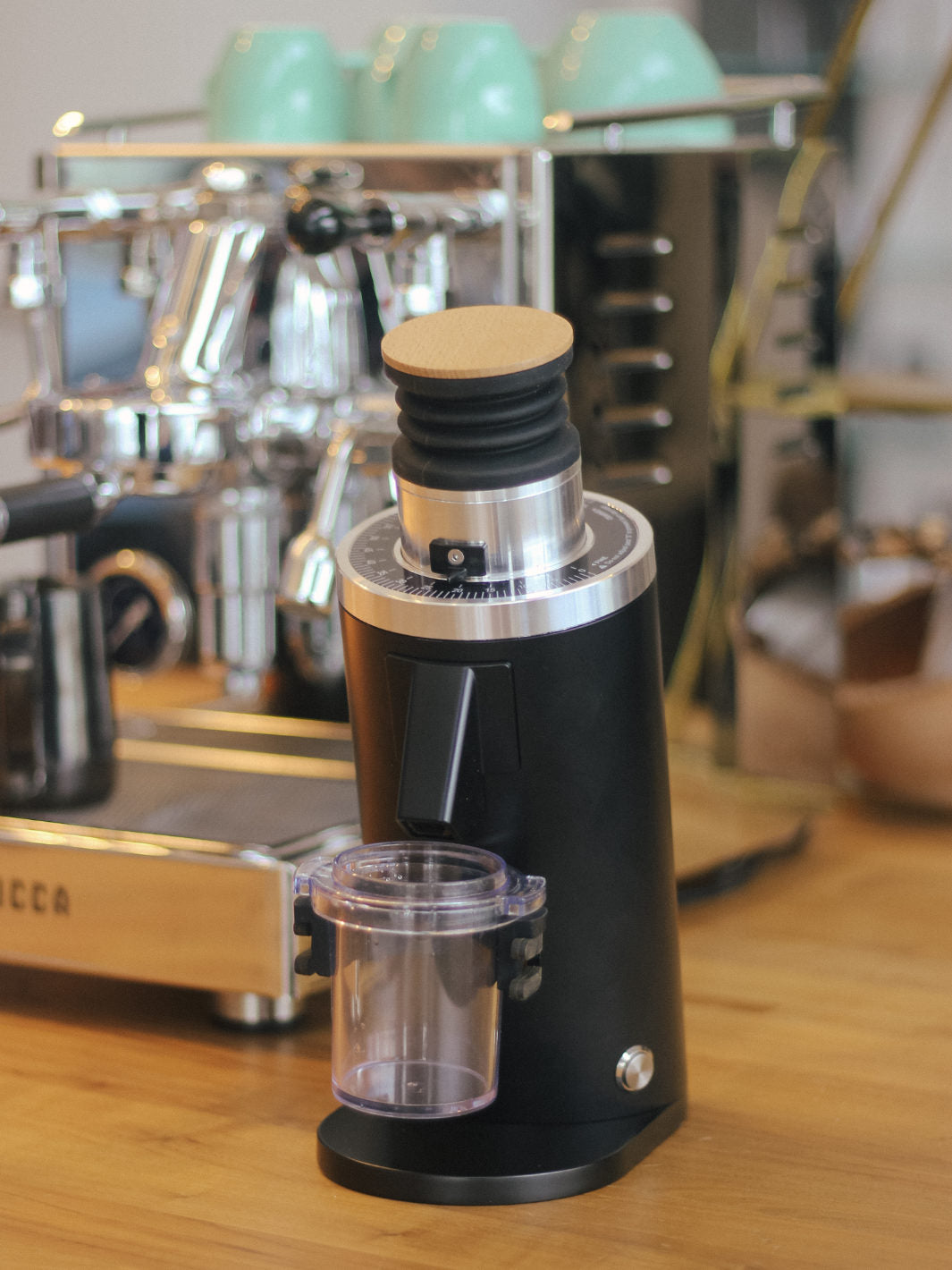Melodrip review + advice

I remember years ago, some co-workers and I chatted about how to fix the inherent flaws of pouring kettles. Chief among them: the difficulty in controlling their narrow, overly concentrated spouts which promote aggressive turbulence in the coffee bed. Without the correct pouring angle(s) and control of the flow rate, you risk over-extraction as the force of the water incessantly stirs/churns the grinds. One of us remarked, "what if you could attach some sort of mini shower head to the end of the spout," as we all gazed at the goose neck kettle in front of us. I’d like to think that this was my idea, but I can’t really recall who brought it up— still, I definitely championed the idea, and to be honest, I was hoping a portable shower-head type kettle—or attachment—would surface someday.
Enter the Melodrip.
The benefits of a Melopdrip tool are many. It mainly helps to curtail the issue over-extraction through over-agitation. It's able to more evenly saturate the coffee grinds, slowing the flow rate, and allowing for the slurry to heat evenly with less agitation-- essentially mimicking the brewing style of a commercial filter machine. The other benefit is that you’re able to focus more on what is actually happening in the coffee slurry, instead of having to watch for precise pouring patterns with a traditional goose neck kettle. As Melodrip asserts, “Kettle-pour agitation is essential, but only when skillfully applied.” The Melodrip levels the playing field for both amateur coffee enthusiasts and experienced baristas alike. It means that you don’t need "flow restrictors" for your kettles, or you don’t have to research the best flow rates for different kettles on the market. Yes, flow rates are still important but they’re less of an issue here since you don’t have to rely on a single, concentrated stream of water. But this doesn't mean that the Melodrip isn’t responsive, because it is. You can adjust the flow rate with little to no delay, and thankfully the effects of over-pouring are dampened/spread-out over the numerous drainage holes in the shower head. Essentially, this thing is more forgiving.
The mobility of the Melodrip tool means you’re able to articulate the stream of water in many ways, and instead of it being a fixed modification on your kettle, you’re able to use the kettle both ways. For instance you could do both styles of brewing in one brew — perhaps using the Melodrip to do your bloom and initial pours, then switching to a more concentrated single spout pour to increase agitation, or vice versa; there are tons of combinations for brewing with this tool. In fact their proprietary recipe calls for the initial brew stages to employ the tool, and the final pours without. It would seem that the ratio of Melodrip pours to single spout pours is something to be played with, to find a balance of combined techniques, for more even extractions.
Things to consider: pouring your hot water though this tool will definitely cool down the temperature a bit, as energy is drawn away from the water to heat the plastic. However, plastic has incredible insulating properties, and should remain temp-stable during the duration of the brew. This variable is yet another one to play with — see which temperatures provide the best overall extraction. I preferred using a higher-than-normal initial temperature, to compensate for the heat loss via the shower head plastic. (I would recommend to brew with cooler water when using medium-to-dark roasts, and hotter when using lighter roasts.) The way in which you articulate the shower head, and how close you hold the tool to the grinds, should be—as much as possible—closely replicated for each brew, to repeat results and control your variables. Do this once you dial-in a recipe and you should be able to replicate your brews with ease.
One thing to remember is because the tool provides such gentle agitation of the slurry, it will churn and stir the grinds less. Therefore, it is important to adjust your grind to compensate for this, and to do a post-bloom stir with a small spoon or bamboo paddle; this will ensure that you have a more consistent extraction, with no dry pockets of coffee.
The beauty of the Melodrip is that you can mimic a batch-brew style extraction, ie., the style of filter coffee from a commercial machine like a Fetco (they use shower heads), but you’re afforded more control. It also means that you don't need to buy an expensive pouring kettle, heck, you could even use a standard kitchen kettle if you had to. With the Melodrip you can get closer to the grinds, or pour from higher up, articulating the tool as you wish, opening up way more possibilities. The combinations are endless with different drippers, different water temperatures, different rhythms of pouring, etc. So have fun, and hopefully this helps you get a bit closer to those sweet, sweet cups we’re all after.




